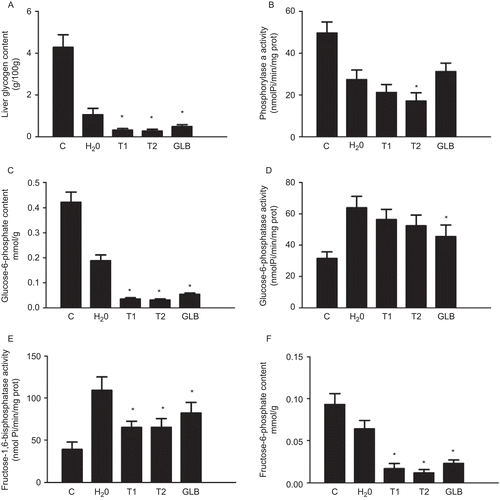Figures & data
Figure 1. HPLC chromatograms of Teucrium polium ssp. capitatum extract (chromatogram A) compared with chromatogram of flavonoids in the standard mixture (chromatogram B): 1.Eriodictiole; 2. Luteoline; 3. Naringenine; 4. Apigenine; 5. Chriseriole; 6. Diosmetine; 7. Acacetine; 8. Genquanine and in the standard mixture (chromatogram C): 9. Cirsimaritine; 10. Cirsilineol; 11. 5,4’-OH 6,7,8,3’-OCH3-flavone. Cirsiliol (Fx) was isolated and identified by mass spectrometry and NMR (CitationStefova et al., 2007).
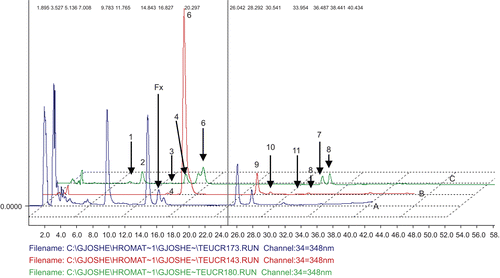
Table 1. Retention time (Rt) in minutes of the flavonoids in the standard mixtures “1” and “2” and in the extract.
Figure 2. Insulin secretion from INS-1E cells stimulated with extract T1. Cells were exposed to the extract for 30 min in the range 5 - 1000 μg/mL and in the presence of 20 mM glucose (G). (n=6 for each stimulatory condition. * denotes P<0.05 compared to 20 mM G).
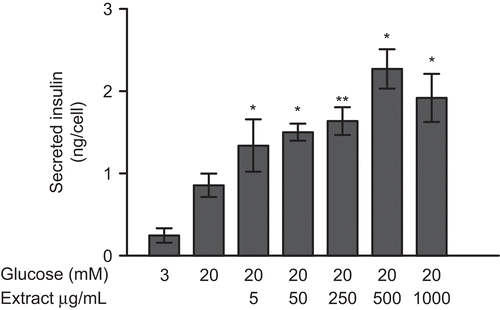
Figure 3. Insulin secretion in INS-1E cells stimulated for 30 min with pure flavonoids (500 μg/mL) in the presence of 20 mM glucose (G). The results have been normalized to secretion per nmole of the flavonoids. The following flavonoids were used: apigenin-7-glycoside, luteolin-7-glycoside, kaempferol, quercetin, rutin, flavon and flavanon. (n=6 for each stimulatory condition. * denotes P<0.05 compared to 20 mM G).
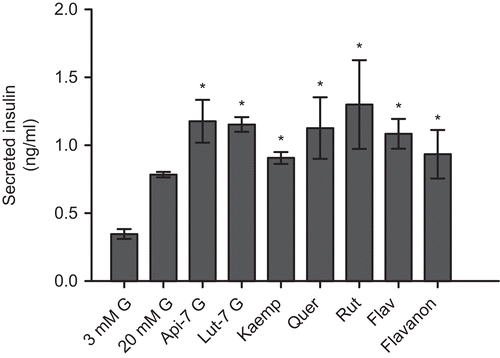
Figure 4. The effect of a single dose of Teucrium polium ssp. capitatum extract on glucose in normoglycemic rats. Rats were fasted for 12 h and divided into random groups (n=6 per group) and received H2O (•), extract T2 (▪ 125 mg/kg i.g.) or T1 (▴ 125 mg/kg i.g., Δ 125 mg/kg i.p.) or glibenclamide (▪ 2.5 mg/kg GLB i.g.).
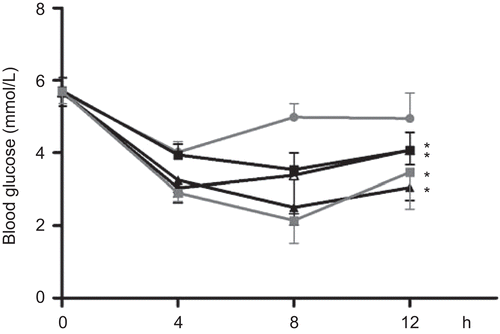
Figure 5. The effect of Teucrium polium ssp. capitatum extract on blood glucose concentration during oral glucose tolerance test. Rats were fasted for 12 h and divided into random groups (n=6 per group) and received H2O (•), extract T2 (▪ i.g.) or T1 (▴i.g., Δ i.p.) extract T1 i.p. 30 min prior to administering a glucose load i.g. Blood glucose concentration was measured before the administration of extracts and two hours after the glucose load. (* denotes P<0.05 compared to the animals that received water).
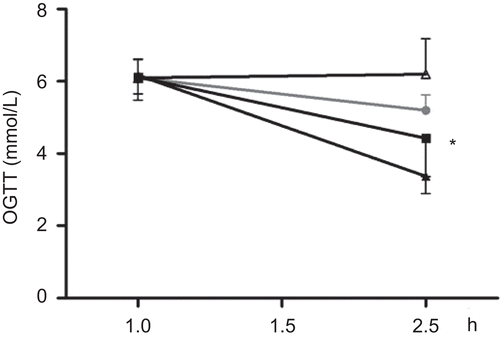
Figure 6. The effect of Teucrium polium ssp. capitatum extract on blood glucose concentration in STZ-diabetic rats after ten days of treatment. Serum glucose concentrations were measured on the last day after administering H2O (•), extract T1 (▴125 mg/kg i.g.), extract T2 (▪ 125 mg/kg i.g.) or glibenclamide (▪ GLB 2.5 mg/kg i.g).

Figure 7. Liver enzyme activities and metabolite concentrations in STZ-diabetic rats treated with Teucrium polium ssp. capitatum extract. The parameters were measured in liver homogenates of the STZ-diabetic rats after 10 days of treatment with either H2O, extract T1 (125 mg/kg i.g.), extract T2 (125 mg/kg i.g.) or glibenclamide (GLB 2,5 mg/kg i.g.) and compared to healthy, untreated animals (C) and diabetic animals, placebo-treated with water (H2O). The panels depict A: Liver glycogen content, B: Glycogen phosphorylase a activity, C: Glucose-6-phosphate concentration, D: Glucose-6-phosphatase activity, E: Fructose-1,6-bisphospshatase activity and F: Fructose-6-phosphate concentration, respectively. It is of note that in all cases placebo treatment with water altered enzyme and metabolite levels (P<0.05). * denotes P<0.05 compared to diabetic animals receiving H2O.
